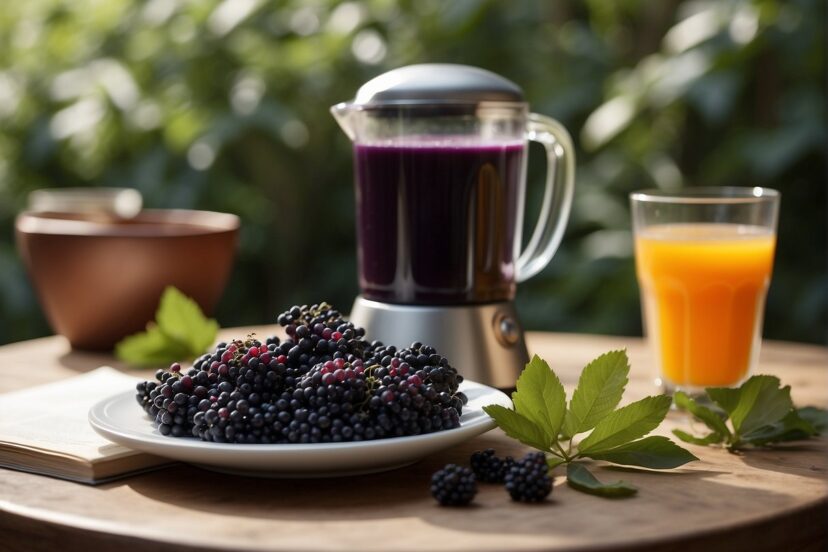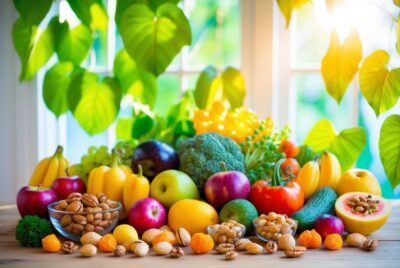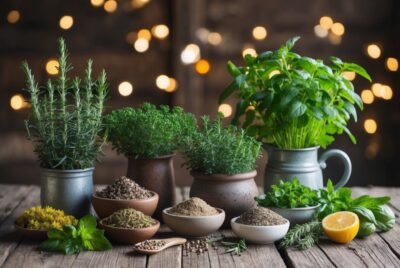Juicing Elderberries: Unlocking Antioxidant Benefits
*We may earn a commission for purchases made using our links. Please see our disclosure to learn more.
Juicing Elderberries: A Guide to Unlocking Antioxidant Benefits
As an avid proponent of natural health remedies, I’ve come to appreciate the powerful benefits that elderberries bring to the table. These small, dark berries are not just flavorful—they are a treasure trove of health benefits, especially when juiced. Elderberries are packed with Vitamin C, antioxidants, and compounds that are known to bolster the immune system. Juicing elderberries is a delightful way to harness these benefits in a concentrated form, making it a worthwhile addition to a health-conscious diet.

My process for juicing elderberries is straightforward and ensures that the potent nutrients are preserved. By extracting the juice, either through a stovetop method or with a steam juicer, one can enjoy the essence of the berries in a variety of ways—from syrups and jellies to oxymels and vinegars. The methods I choose aim to retain the rich, immune-boosting properties of the berries, which are especially cherished during the colder months when our bodies require extra protection against seasonal ailments.
Understanding how to safely prepare elderberry juice is crucial, as the raw berries, their stems, and leaves contain substances that can be harmful if not properly processed. I ensure that the berries are adequately cooked, which neutralizes these substances, allowing me to enjoy the health benefits without risk. The result is a versatile juice that can be consumed on its own or incorporated into other recipes, offering a daily boost to my immune system and overall wellness.
Understanding Elderberries

In my experience, elderberries, particularly from the Sambucus nigra species, are a notable fruit for their nutritional benefits and unique properties. Let’s explore how to identify quality elderberries and understand their nutritional profile.
Identifying Quality Elderberries
When selecting elderberries, I look for plump, darkly pigmented berries indicating maturity and maximum nutrient content. It’s crucial to distinguish between wild elderberries and their garden-variety counterparts, as the wild ones may have higher levels of cyanogenic glycosides, which can be toxic if not properly processed. Harvesting fully ripe berries reduces the risk, but caution is advised.
Nutritional Profile
Elderberries are praised for their vitamin C content, which is essential for immune support and skin health. I also value them for their potassium and iron—minerals vital for maintaining healthy blood pressure levels and preventing anemia. The nutritional benefits of elderberries don’t stop there. They’re rich in various vitamins and potent antioxidants that protect cells from damage. However, it’s important to remember that raw elderberries and their seeds contain cyanogenic glycosides, so they should be juiced and cooked properly to avoid adverse effects.
Juicing Elderberries Fundamentals

In my experience, making elderberry juice requires careful preparation, proper equipment, and an understanding of safety measures. I’ll walk you through the essential steps and tools you’ll need to create a delicious and potent juice from these berries.
Equipment List
Before beginning the juicing process, ensure you have the following items on hand:
- Pot: A large pot for boiling the berries.
- Steam Juicer: The most efficient way to extract juice.
- Strainer: To remove any leftover solids.
- Cheesecloth or Fine Mesh Bag: For additional filtration.
- Potato Masher or Blender: To break down the berries before juicing.
- Canning Jars or Bottles: If you plan to store the juice.
- Canning Equipment: If you choose to preserve the juice via canning.
Preparation Steps
- Selecting Berries: Use only ripe elderberries, removing any unripe berries as they can be toxic.
- Cleaning: Rinse the berries thoroughly in water to remove any debris.
- Detaching Stems: Stems can impart a bitter taste, so remove them. One method I utilize involves holding the stem of the berries and smacking them against the inside of a bucket.
- Boiling: Place elderberries in a pot with water and bring to a boil, then simmer. This helps to release the juice.
- Crushing Berries: Use a potato masher or blender to break down the berries further after boiling.
Safety and Preservation
- Toxicity: Never ingest raw elderberries or seeds due to their toxic properties.
- Canning: Preserve the juice by canning, ensuring you follow proper sterilization and sealing techniques to extend the shelf life.
- Storage: Pour the finished juice into clean bottles or jars. For unsealed juice, store in the fridge and consume within a week or freeze for extended use.
Serving and Usage
- Diluting: Elderberry juice can be potent, so you may dilute it with water or apple juice to taste.
- Sweetening: Optionally add honey or syrup to sweeten, adjusting to personal preference.
- Elderberry Products: The juice can be transformed into various products like elderberry syrup, which often includes ingredients like cinnamon sticks, or elderberry gummies by further processing.
- Servings: Serve the juice as is, or use it in recipes requiring elderberry extract.
By following these guidelines, you can ensure that your elderberry juicing process is both safe and successful, yielding a product that can be enjoyed in various forms.
Recipe Variations for Juicing Elderberries

When I make elderberry juice, I often experiment with different sweetening and flavoring options to tailor the juice to my taste preferences or to complement the courses it will serve.
Sweetening and Flavoring Options
After juicing the elderberries, I find that adding a sweetener can enhance the naturally tart flavor. Here are my preferred sweetening options:
- Sugar: A classic choice which I use when I want a traditional sweetness.
- Honey: For a natural alternative, I opt for raw honey which also adds a subtle floral note. The amount of sweetener can vary according to taste, but I usually start with a tablespoon per cup of juice and adjust from there.
Flavoring elderberry juice adds depth:
- Ginger: A hint of ginger provides a warm, spicy kick. When I include ginger, I use about a teaspoon of freshly grated ginger per liter of juice.
- Citric Acid: To keep the juice fresh and add a tangy note, I add a pinch of citric acid. It accentuates the elderberry’s natural flavors without overwhelming them.
In terms of course, elderberry juice serves as a versatile beverage. I can enjoy it as a refreshing drink on its own or as part of a cocktail. As for cuisine, it’s not bound to any particular type; it’s quite universal.
Regarding the total time, incorporating these additives doesn’t significantly extend the preparation time. Once the juice is ready, it takes me just a few additional minutes to mix in the desired sweeteners and flavorings.
Lastly, if I desire a non-sugar option, I sometimes use grape juice to add sweetness. This also contributes an extra layer of fruitiness, pairing nicely with the robust flavor of elderberries.
Health Implications and Benefits of Juicing Elderberries

In my exploration of elderberries, particularly their role in juicing, I’ve come to understand that these small fruits pack a hefty nutritional punch, with a history rooted in traditional medicine and claims that extend to modern health.
Elderberries in Traditional Medicine
Elderberries have been a staple in traditional medicine across North America and Europe. Gardeners have often grown elderberry shrubs not just for their delicate flowers but for their medicinal seeds. Historically, I’ve learned that both the berries and flowers of the elder plant were used extensively to aid various ailments. The berries, in particular, have been associated with immunity enhancement, believed to be an effective agent against colds and the flu.
Modern Health Claims of Juicing Elderberries
Immune System and Antioxidant Support: Rich in vitamins A, E, and an array of B vitamins, elderberries are celebrated for their antioxidant properties. Consuming foods high in antioxidants can help combat inflammation and oxidative stress in the body. By incorporating ripe elderberries into a daily juicing routine, I’ve noticed they can potentially offer immune-boosting benefits.
Nutritional Profile of Elderberries:
When juicing, it’s essential to consider the nutritional composition:
- Calories: Low
- Protein: Minimal
- Fat: Negligible
- Carbohydrates: Moderate, primarily from natural sugars
I’ve seen elderberries applauded for their dietary fiber, calcium, and magnesium content as well. Juicing them can be a delightful way to enjoy these nutrients, though I’m always careful to deseed the berries as the seeds can be toxic.
Acknowledging the Risks: However, not all health claims are backed by robust scientific evidence. The FDA has not officially endorsed elderberry products for medical use. It’s important to use them as a supplement to a balanced diet and not rely solely on their purported health benefits. As someone who values clear, accurate information, I believe in approaching the juicing of elderberries with a healthy balance of enthusiasm and skepticism.
Frequently Asked Questions about Juicing Elderberries
In this section, I’ll answer some common inquiries about juicing elderberries, from their health benefits to how to safely make your own juice at home.
1. What are the health benefits of juicing elderberries?
Elderberries are rich in vitamins A, B, and C, which can support the immune system. They are also a source of antioxidants and anti-inflammatory compounds, potentially benefiting overall health.
2. Can you provide a simple recipe for making elderberry juice at home?
To make elderberry juice, combine 1 cup of fresh elderberries with 2 cups of water in a saucepan. Bring to a boil, reduce heat, and simmer for 15 minutes. Crush the berries, strain the mixture, and add sweetener if desired.
3. What are the safe practices for extracting juice from elderberries to remove toxins?
Elderberries must be ripe and cooked to safely remove toxins, particularly to avoid the toxic compounds in the seeds. Ensure thorough cooking of the berries and proper straining to eliminate any seeds and stems.
4. How can one juice elderberries using a steam juicer?
Using a steam juicer, place cleaned elderberries into the juicer’s top section. Fill the bottom section with water, bring to a boil, and steam for approximately an hour or until the berries release their juice. Collect the juice from the spout.
5. Is it possible to make elderberry juice from dried berries and if so, how?
Yes, it’s possible. Soak the dried elderberries in water overnight, then simmer in the same water for 15-20 minutes the next day. Strain and press the berries thoroughly to extract the juice. Adding a sweetener is optional.




